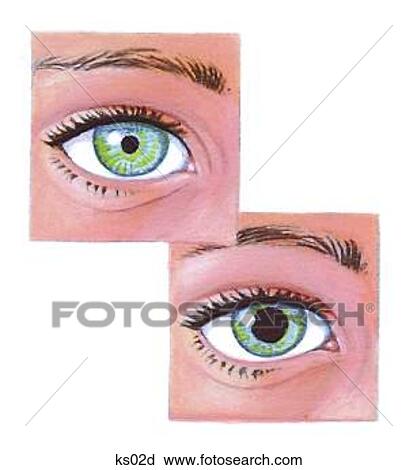

- #Regular pupil size how to#
- #Regular pupil size skin#
- #Regular pupil size series#
- #Regular pupil size free#
The researchers can't say for sure that D.W.
#Regular pupil size free#
Using a type of brain scan known as functional magnetic resonance imaging (fMRI), the researchers found increased activation of certain parts of the brain involved in volition, or the ability to decide and do something out of free will. improved his focus and could see objects clearly nearly two times closer to his face than he could if he wasn't controlling his pupil size.

could voluntarily constrict his pupil even more. What's more, even at the closest point an object can be for the eye to still see it in focus, in which the pupil is already "maximally" constricted (imagine holding up a pencil in front of the eyes and moving it closer to the face and stopping at the point before it becomes blurry), D.W. could dilate his pupils up to 0.09 inches (2.4 millimeters) in diameter and constrict them to 0.03 inches (0.88 mm) in diameter.
#Regular pupil size skin#
In one test, the researchers measured the electrical properties of the skin by applying voltage to test whether he was aroused by increased mental effort, which also might have increased his pupil size indirectly. indeed had this ability - and they found no indication that he was changing the size of his pupils indirectly.
#Regular pupil size series#
Through a series of tests, the researchers confirmed that D.W. What's more, that he can feel the muscles in the pupils directly "is astonishing, as it was thought to be impossible." How rare is this? different from other people who have demonstrated the ability to change their pupil size, Strauch told Live Science. Always seek immediate medical attention if differing pupil size occurs. If you have differing pupil size after an eye or head injury, get medical help immediately. If there is any recent change in pupil size, it may be a sign of a very serious condition. He told the researchers that, to change his pupil size, all he has to do is concentrate on the eye he doesn't have to imagine a bright or dark environment. Contact a provider if you have persistent, unexplained, or sudden changes in pupil size.
#Regular pupil size how to#
At first, he would change his pupil size by focusing in front of or behind an object, but with practice, he learned how to do it without focusing on objects. "Constricting the pupil feels like gripping, tensing something making it larger feels like fully releasing, relaxing the eye," D.W. Anyone can have pupils that differ in size with no problems. The pupil allows light to enter the eye so that you can see. didn't notice that he had this ability until he played computer games for long periods of time. 18, 2022 Anisocoria is when your eye’s pupils are not the same size. told Strauch and his colleagues at Ulm University. "I showed a friend that I can 'tremble' with my eyeballs, and he noticed that my pupils became small," D.W. realized that he could change the size of his pupils. When he was about 15 or 16 years old, the young man - identified in the case report by his initials, D.W. (Strauch was previously a doctoral student at Ulm University). Coma or brain death: Severe brain damage may cause a change in the size and reactivity of the pupils.But no one thought it was possible to change pupil size by directly controlling it like a muscle - that is, until a student of psychology at Ulm University in Germany contacted Strauch after taking one of his courses.Surgery: Eye surgery may result in alterations in pupil size, which can be permanent.Seizure: Sometimes seizures (a disruption of electrical activity in the brain) can cause changes in the pupils, which may be equal or unequal.Migraine: While it is not common, migraines can cause anisocoria.Vision loss: Significant vision defects can affect pupil size and reactivity.Increased intracranial pressure: This can result from a brain tumor, meningitis (inflammation of the fluid around the brain), or a stroke.Trauma: An injury affecting the eye or the brain may cause the pupils to be unequal.

Inflammatory conditions, such as MS and sarcoidosis, also can do this.


 0 kommentar(er)
0 kommentar(er)
